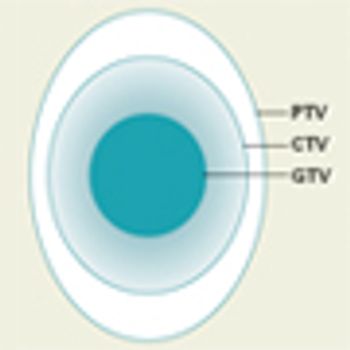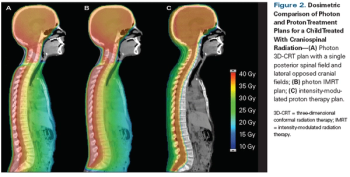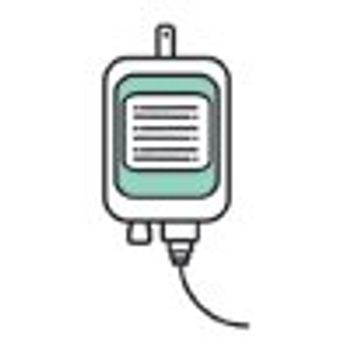
Researchers have discovered a way to test for multiple neuroblastoma-associated genes simultaneously, which may help to improve definition of disease status in patients with relapsed/refractory neuroblastoma.

Your AI-Trained Oncology Knowledge Connection!


Researchers have discovered a way to test for multiple neuroblastoma-associated genes simultaneously, which may help to improve definition of disease status in patients with relapsed/refractory neuroblastoma.

Dasatinib was safe and effective in pediatric patients with chronic myeloid leukemia, according to a new study, establishing the agent as a new standard of care for this population.

Significant improvements in treatment protocols have reduced the incidence of serious chronic late health effects in survivors of childhood cancer treatment.

There is considerable value in having achieved a minimal residual disease negativity for pediatric and adult patients with acute lymphoblastic leukemia.

Female survivors of childhood acute lymphoblastic leukemia were at risk for neurocognitive impairment and were more susceptible to the effects of sleep disturbance and fatigue compared with their male counterparts.

Younger cancer survivors experience worse survival outcomes following a second primary cancer diagnosis than their older counterparts, according to a recent study.

During maintenance therapy for childhood ALL, there was a general increase in DNA-incorporated thioguanine nucleotides (DNA-TGN), and this increase was associated with a lower frequency of disease relapse.

Minimizing late treatment toxicities in these patients remains an important priority due to both the young age of the patients and the high cure rate that can be achieved.

In this article we discuss the specifics of refining current strategies for radiation delivery, as well as new and up-and-coming heavy particle techniques and radiotherapeutics.

Event-free survival was not maintained in children and adolescents with intermediate-risk malignant germ cell tumors when cisplatin-based chemotherapy was reduced from four to three cycles and compressed from 5 to 3 days per cycles.

The use of several simple improvement measures including a “chemotherapy huddle” can result in a marked, sustained reduction in chemotherapy errors in a pediatric oncology setting.

A study showed that testing pediatric brain tumors for genetic abnormalities is feasible and could play a role in guiding patients’ treatment.

Many childhood brain tumors harbor potentially targetable gene mutations, according to a prospective single-institution study of more than 200 tumor samples, researchers reported in the journal Neuro-Oncology.

Presentation with musculoskeletal manifestations as the only symptom in pediatric B-cell acute lymphoblastic leukemia was significantly associated with diagnostic delay. However, this delay did not affect patient prognosis.

The use of minimal residual disease provided a more objective measure of induction failure in patients with pediatric acute lymphoblastic leukemia than did morphology.

The antioxidant sodium thiosulfate protects children and adolescents against cisplatin-induced hearing loss without any added serious adverse effects, according to a randomized study.

Among pediatric acute lymphoblastic leukemia patients who have favorable prognosis, an attempt to reduce the burden of chemotherapy by using lower intensity delayed intensification failed to show better outcomes.

As part of our coverage of the ASH Annual Meeting held December 3rd to 6th in San Diego, today we are speaking with Kim Nichols, MD, director of the Cancer Predisposition Division at St. Jude Children's Research Hospital. At this year’s meeting, Dr. Nichols will be participating in a session on genetic susceptibility to leukemia.

In this interview we discuss updates, challenges, and contributing factors associated with pediatric brain cancers.

Single-agent blinatumomab demonstrated antileukemia activity in pediatric patients with relapsed or refractory B-cell precursor acute lymphoblastic leukemia (BCP-ALL) in a recently published phase I/II study.

Despite evolution of treatments and substantial improvements in survival, the self-reported health status among adult survivors of childhood cancers has not improved over 3 decades.

Use of the targeted therapy dabrafenib resulted in a high overall response rate and was well tolerated in a small phase I/II study of pediatric BRAF V600-mutant low-grade glioma.

The use of an intensified treatment regimen to treat metastatic medulloblastoma in children and adolescents conferred an overall favorable survival, according to the results of a recent study. However, patients within varying subgroups and with certain biologic parameters did not have uniform outcomes.

In children with primary brain tumors who were treated with cranial radiation, cerebral volume and radiation dose may affect the rate of vocabulary development.

Survivors of childhood cancers are at significantly increased risk of cardiotoxicity if treated with anthracyclines, according to a new review of the literature.